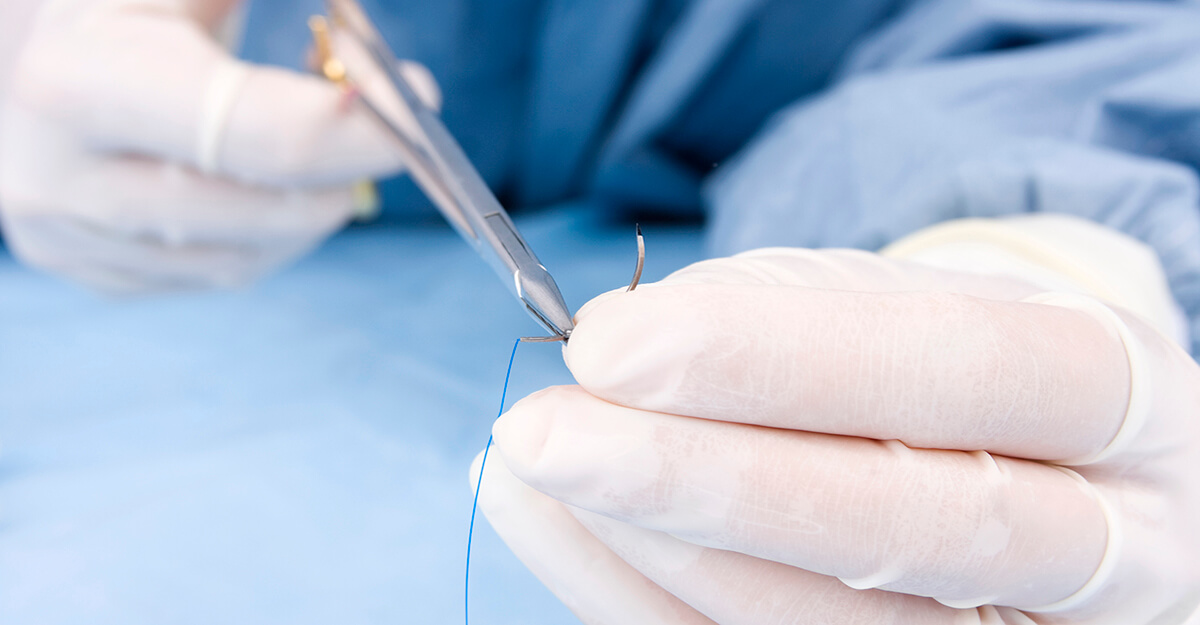As a wound care clinician, you know the wound healing process has many moving parts, including types of wound closures.
In wound care, the goal should be to heal the wound as soon as possible and to keep it healed. And with wound healing, there are three types of wound closure techniques to consider to achieve this — primary intention, secondary intention, and tertiary intention.
The selection of wound closure type depends on how the wound is presented. Noting physical characteristics like exudate color or wound size can help you identify the correct course of treatment and the most appropriate type to use.
Classifying types of wounds
When considering your wound closure, it’s also important to factor in the four wound categories. The following groupings are listed from the lowest risk to the highest risk for developing an infection:
- Clean wounds (Class I): These wounds show no signs of infection or inflammation and are primarily closed. Additionally, a clean wound does not typically enter any internal organs, and there is no break in the sterile operative technique. These often involve elective, non-traumatic surgical procedures.
- Clean-contaminated wounds (Class II): Wounds classified as clean-contaminated may be mostly closed, are clean, and have no contamination present. A clean-contaminated wound is one where an organ has been entered but without any significant spillage of the organ’s contents. Surgical procedures might have been conducted in an urgent fashion. However, these wounds can have an increased risk of infection from these circumstances.
- Contaminated wounds (Class III): If a wound is considered contaminated, it is typically open and shows signs of contamination. Examples of contaminated wounds are penetrating traumatic injuries, wounds with spillage from the gastrointestinal tract but are less than four to six hours old, and wounds where a major break in the operative sterile technique occurs.
- Dirty-infected wounds (Class IV): Wounds that are identified as dirty-infected are open, are considered infected, and may have a foreign object in the wound bed (e.g., fecal matter or debris). Examples of dirty-infected wounds are wounds that present with an abscess or present with a perforated bowel with possible pus and/or stool within the abdominal cavity.
Primary intention
Primary intention is a wound closure technique that not only makes wound healing more manageable but also lessens the amount of tissue loss. Methods including sutures, staples, adhesive strips of tape, and sometimes surgical glue. You can close a wound in this way because there is a low risk for infection as well as little concern for the wound’s edges separating (dehiscing) due to tension on the incision line. Primary intention lowers the risk for infection, leaves minimal scarring, and helps the wound heal faster.
But how do you know what wounds should use primary intention? In general, wounds meeting the following criteria are acceptable candidates for primary closure:
- Classified as clean or clean-contaminated
- Can close within four to possibly eight hours from their development
- Sustain very little tissue loss and can be closed without tension
Secondary intention
Secondary intention is when a wound is not surgically closed either completely or partially. This happens when a wound has a large amount of tissue loss or the edges cannot be safely brought together surgically. Over time with secondary healing, you will see the wound bed filling in with more viable tissue, such as granulation tissue. As this occurs, less non-viable tissue, such as slough or eschar, will be less present. Ultimately, you will observe the epithelial covering of the wound bed, indicating the end stages of wound healing.
The healing time for secondary intention is a very slow process. Often the wound’s healing progress might be stuck in one of the phases of full-thickness wound healing. These types of wounds may be labeled “chronic,” and at this stage of healing, it can be helpful to consult with your wound care colleagues.
You can use secondary intention for wounds that have the following characteristics:
- Present as contaminated or dirty-infected
- Experience a delay in the clinical consultation
- Cannot be surgically closed without tension
- At risk for a post-procedure infection
Tertiary Intention
Tertiary intention is often labeled as delayed primary intention and is used when there is a need to delay wound closing. With this type of closure, there is a planned period where the superficial layers of the wound are left open. If the situation allows, later, these layers are closed in a similar fashion to what is performed with primary intention, but in this case, the process is more prolonged. Also, tertiary intention might include closing the wound bed using a skin graft, a skin flap, or a skin substitute.
Examples of wounds that would use a tertiary closure could include:
- Wounds with a superficial portion of soft tissue left open to allow time for either infection or edema to clear
- Wounds in the abdominal or pelvic area where a perforated viscus is found (In this example, only the abdominal wall’s fascia is closed initially to prevent evisceration, and the more superficial subcutaneous fat and skin are left open for a period to be closed later.)
Selecting from these three types of wound closures is your decision. And using your training and experience, as well as your clinical assessment of the patient to make an informed decision will give the patient the safest outcome.
Editor’s Note: This post was originally published in May 2021 and has been updated with new content.
If you're interested in expanding your knowledge of wound care, networking with colleagues, or seeing the latest wound care products and technology, register for the Wild on Wounds (WOW) conference August 14–17 in Phoenix, Arizona.
Register NowWhat do you think?

